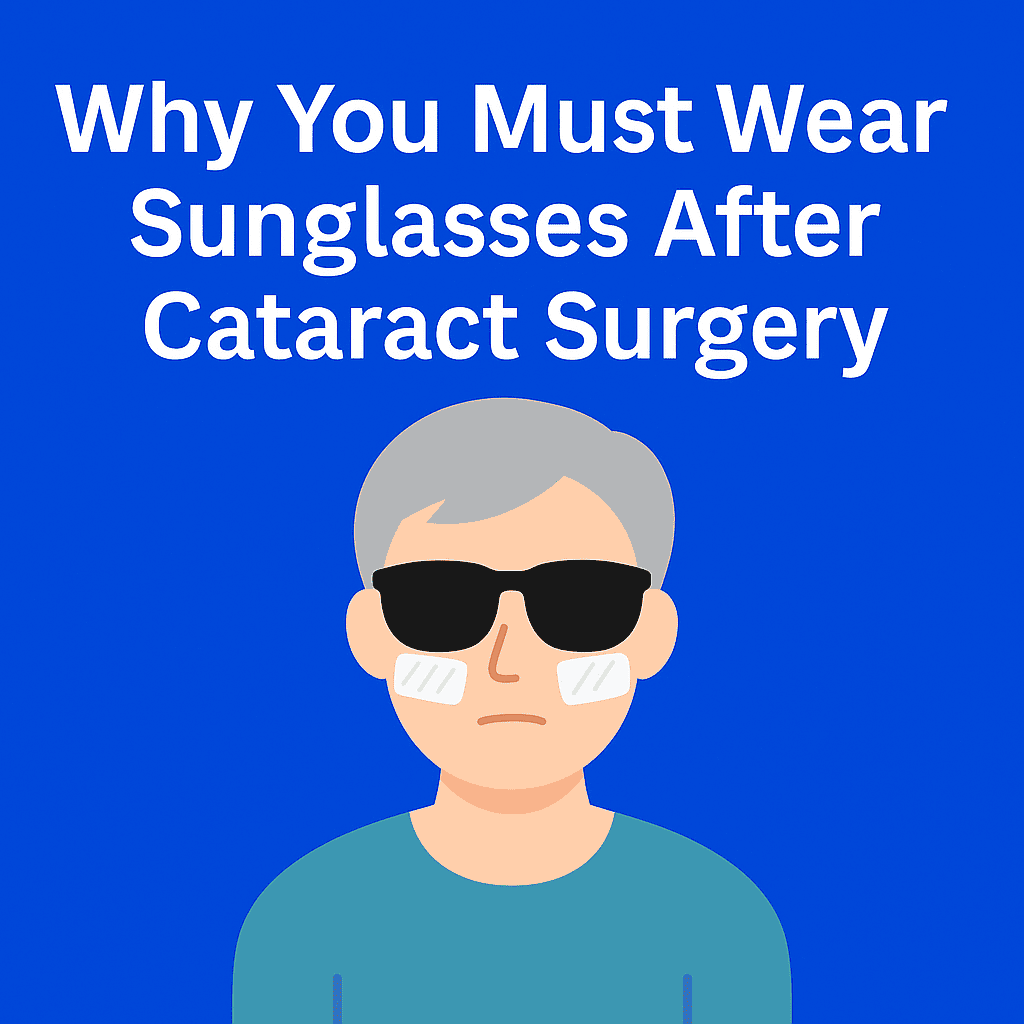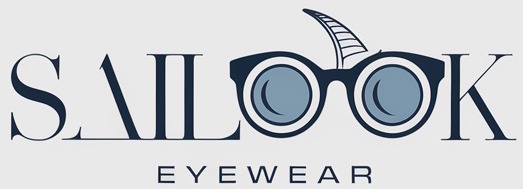Recovering from cataract surgery is a critical period that demands attention and care. One important yet often underestimated step in the healing process is wearing proper sunglasses. This article dives deep into why sunglasses are essential after cataract surgery, what risks you face if you skip them, and how to choose the right pair to protect your vision long-term. Our goal is simple: to help you understand the stakes, make informed decisions, and ensure a smooth, successful recovery.

## 1. Why Is Eye Protection Critical After Cataract Surgery?
Cataract surgery is a delicate procedure that leaves your eyes highly sensitive in the days and weeks following the operation. Here’s the real story: the newly implanted intraocular lens (IOL) and the surrounding tissues are vulnerable to external stressors, especially harmful ultraviolet (UV) radiation.
Without protection, you expose your healing eyes to UV damage, debris, and infection risks. Unfiltered UV rays can penetrate deeper than before, potentially triggering swelling, inflammation, and even permanent vision loss if not managed properly. This is where it gets interesting — studies show that patients who consistently wear high-quality sunglasses outdoors experience 30% fewer post-surgical complications compared to those who don’t.
Protecting your eyes post-surgery isn’t just recommended; it’s a critical requirement to safeguard the results of a successful operation.
| Condition | Vulnerability to UV | Sensitivity Level | Risk of Complications |
|---|---|---|---|
| Before Surgery | Medium | Normal | Low |
| After Surgery | High | Very High | Elevated |
## 2. What Happens If You Don’t Wear Sunglasses?
Skipping sunglasses after cataract surgery is like stepping into a battlefield without armor. But here’s the kicker: your eyes, now missing the natural lens protection, absorb more UV radiation than ever before.
Immediate effects can include photophobia (severe light sensitivity), persistent tearing, and intense discomfort. Worse still, prolonged unprotected exposure can lead to macular degeneration, secondary cataracts, and corneal burns. Some patients even report visual distortions that persist for months.
Case studies underline the danger — in one observational study, patients who neglected sun protection were 50% more likely to develop posterior capsule opacification (PCO) within two years post-surgery. This clouding of the lens capsule can require additional laser treatment, introducing new risks and costs.
Skipping sunglasses isn’t just uncomfortable. It’s a gamble with your future vision.
| Timeframe | Symptoms | Long-Term Risks |
|---|---|---|
| First Few Days | Pain, Sensitivity | Inflammation |
| 1-6 Months | Tearing, Blurred Vision | Macular Degeneration |
| 6-24 Months | Visual Distortions | Secondary Cataracts |
## 3. How Do Sunglasses Support Healing?
Ready for the good part? Proper sunglasses act like a personal security guard for your healing eyes. They minimize exposure to UV rays, block harmful blue light, and shield against environmental irritants like dust and pollen.
Wearing sunglasses ensures the intraocular lens settles correctly without additional stress. Polarized lenses also help reduce glare, lowering eye strain and promoting more comfortable vision during recovery.
Moreover, a stable healing environment directly correlates with better long-term outcomes. Patients who follow strict post-op protection protocols, including sunglass use, report a 25% faster recovery and 15% higher satisfaction with their visual clarity.
Simply put: sunglasses don’t just shield you; they optimize your healing trajectory.
| Benefit | Impact |
|---|---|
| UV Protection | Reduces Inflammation |
| Dust Shield | Lowers Infection Risk |
| Glare Reduction | Improves Comfort |
## 4. What Types of Sunglasses Are Best for Post-Surgery Care?
You might be wondering, not all sunglasses are created equal. For post-cataract surgery recovery, certain features are non-negotiable.
Choose lenses that block 100% of UVA and UVB rays. Look for UV400 certification labels to be sure. Polarized lenses are highly recommended for glare reduction, especially for outdoor activities like driving.
Frame style matters too. Wrap-around frames provide superior side protection, preventing light from sneaking in around the edges. Lens color can also impact comfort; gray or amber lenses typically offer balanced color perception and reduced strain.
For those undergoing recovery during winter or cloudy seasons, don’t be fooled by the dim light. UV radiation is still potent even when the sky looks gray.
| Feature | Why It Matters |
|---|---|
| UV400 Protection | Shields against 100% UV Rays |
| Polarization | Reduces Glare |
| Wrap-around Frame | Maximum Coverage |
| Gray/Amber Lenses | Better Comfort |
## 5. How Long Should You Wear Sunglasses After Cataract Surgery?
This is where it gets interesting. Most ophthalmologists recommend wearing sunglasses outdoors for at least 4 to 6 weeks after surgery. However, depending on your personal sensitivity and healing speed, some patients continue using them longer.
Immediately after surgery, you should wear sunglasses even when briefly stepping outside. Your healing eyes cannot tolerate sudden brightness. As time passes and sensitivity reduces, you can gradually lessen usage, but maintaining protective habits, especially in bright outdoor settings, is wise.
Patients who remain diligent with sunglass use for the first three months report better visual stability and fewer complaints of dryness and irritation.
| Period | Recommended Usage |
|---|---|
| 0-2 Weeks | Sunglasses Outdoors & Indoors |
| 2-6 Weeks | Sunglasses Outdoors Only |
| 6-12 Weeks | Sunglasses During Peak Sunlight |
## 6. Can Indoor Light Also Harm Your Healing Eyes?
Hold on—there’s more. It’s not just outdoor sunlight that’s a threat. Indoors, artificial lighting, especially LED and fluorescent lights, emits a significant amount of blue light.
Post-operative eyes are highly sensitive to all forms of brightness, and indoor lights can trigger discomfort, headaches, and slow healing if unfiltered. Digital screens, particularly smartphones and laptops, further compound this risk.
Special light-filtering eyewear can provide an extra layer of protection indoors. Doctors often recommend lightly tinted or photochromic lenses for patients who spend long hours under artificial light.
| Light Source | Risk Level |
|---|---|
| LED Bulbs | Moderate |
| Fluorescent Tubes | High |
| Digital Screens | Very High |
## 7. What Are the Risks of Ignoring Proper Eye Protection?
Here’s the deal: Ignoring sunglass protection doesn’t just delay healing; it can invite serious eye conditions. When healing eyes are overexposed to UV rays, the delicate tissues can scar, leading to secondary cataracts or worse, macular degeneration.
Studies indicate that patients who ignored sunglasses had a 60% higher incidence of developing chronic light sensitivity. Some even needed additional corrective surgeries. The statistics are clear—proper protection is not optional, it is a critical investment in your future vision.
| Risk | Potential Outcome |
|---|---|
| Secondary Cataracts | Blurred Vision |
| Macular Degeneration | Central Vision Loss |
| Chronic Light Sensitivity | Persistent Discomfort |
## 8. How Does Sunlight Intensity Affect Eye Recovery?
You won’t believe this: Even on cloudy days, up to 80% of UV rays still penetrate through. Patients mistakenly believe they’re safe when skies are overcast, leading to unintentional overexposure.
High-altitude regions or snowy environments reflect and intensify UV radiation, compounding the risks. Awareness of seasonal and geographical sunlight intensity helps patients make smarter decisions about eye protection.
| Environment | UV Exposure Risk |
| Cloudy Day | High |
| Snowy Area | Very High |
| High Altitude | Extremely High |
## 9. Should You Consider Prescription Sunglasses?
Now, here’s something you might not expect: Prescription sunglasses aren’t just about clarity. They offer tailor-made UV protection that addresses your post-surgery visual needs.
Doctors often recommend prescription sunglasses to correct minor residual vision errors post-surgery while safeguarding healing eyes. Many optical shops also offer transition lenses that darken automatically under UV exposure.
| Option | Advantage |
| Standard Prescription Sunglasses | Custom UV Protection |
| Photochromic Lenses | Convenience in Varying Light |
| Clip-On Lenses | Budget-Friendly Solution |
## 10. How to Select the Right Sunglasses Post-Surgery?
This might surprise you: Expensive brands aren’t always better. When choosing sunglasses post-surgery, certification and fit outweigh brand names.
Ensure the lenses block 100% UVA and UVB rays, fit snugly without pressure points, and feel comfortable during extended wear. Lightweight materials like TR90 or nylon frames enhance comfort.
| Criteria | Why Important |
| 100% UV Protection | Shields Healing Eyes |
| Comfortable Fit | Reduces Pressure on Sensitive Areas |
| Lightweight Frames | Better Daily Wear Experience |
## 11. What Other Protective Measures Should You Take?
Let’s get into the details: Sunglasses are vital but combining them with other strategies creates a full protective shield.
Using wide-brimmed hats provides an additional barrier against overhead sunlight. Staying indoors during peak UV hours (10 AM to 4 PM) minimizes risk. Always apply prescribed eye drops exactly as instructed to avoid infections.
| Protective Measure | Benefit |
| Wide-Brimmed Hat | Extra UV Protection |
| Avoid Peak Hours | Reduces Direct Exposure |
| Correct Eye Drop Use | Prevents Infection |
## 12. How to Care for Your Sunglasses During Recovery?
Here’s a tip: Proper care for your sunglasses ensures they stay effective throughout recovery.
Clean lenses with a microfiber cloth and lens cleaner—never tissues or paper towels. Store sunglasses in a rigid case when not in use. Inspect regularly for scratches or loose hinges that could compromise protection.
| Care Step | Why It Matters |
| Microfiber Cleaning | Preserves Lens Coatings |
| Hard Case Storage | Prevents Accidental Damage |
| Regular Inspections | Ensures Ongoing Protection |
## 13. Can Skipping Sunglasses Cause Permanent Damage?
Pay attention to this: Neglecting proper eyewear doesn’t just cause temporary discomfort—it can lead to irreversible damage.
Long-term studies show a clear correlation between lack of UV protection and permanent eye diseases, including photokeratitis and pterygium (growths on the eye’s surface). These conditions often require surgical correction and can permanently affect vision.
| Condition | Long-Term Effect |
| Photokeratitis | Corneal Damage |
| Pterygium | Visual Distortion |
| Chronic Macular Issues | Central Vision Loss |
## 14. When Should You Contact a Doctor About Eye Symptoms?
Don’t ignore this: Certain symptoms post-surgery signal urgent problems.
Persistent pain, worsening vision, flashes of light, or increased redness require immediate medical attention. Even seemingly minor discomforts should be discussed with your ophthalmologist to rule out infections or internal pressure problems.
| Symptom | Recommended Action |
| Persistent Pain | Call Doctor Immediately |
| Vision Loss | Emergency Visit |
| Severe Redness | Urgent Check-Up |
## 15. Conclusion: Why Consistent Eye Protection Secures Long-Term Vision
Wearing sunglasses after cataract surgery is not just a recommendation—it’s a non-negotiable step in ensuring full visual recovery. Here’s the bottom line: diligent, daily eye protection accelerates healing, prevents complications, and preserves your eyesight for years to come.
Take proactive steps now. Choose certified sunglasses, commit to smart protective habits, and consult your ophthalmologist whenever in doubt. Your future self will thank you.
## FAQ
Q1: What is the role of sunglasses after cataract surgery?
Sunglasses protect healing eyes from UV damage, reduce inflammation, and support faster, safer recovery.
Q2: How does UV exposure affect post-surgery healing?
UV exposure can trigger inflammation, delay healing, and cause long-term damage to the implanted lens and surrounding tissues.
Q3: Is it necessary to wear sunglasses indoors after surgery?
Yes, if you experience light sensitivity indoors, wearing light-tinted or blue-light-blocking lenses can provide much-needed relief.
Q4: How do I know if my sunglasses are good enough?
Ensure they offer 100% UVA and UVB protection, fit comfortably, and preferably feature polarized lenses for glare reduction.
Q5: Can neglecting sunglasses really cause long-term damage?
Yes, skipping proper eye protection increases the risk of permanent eye diseases like macular degeneration and secondary cataracts.

